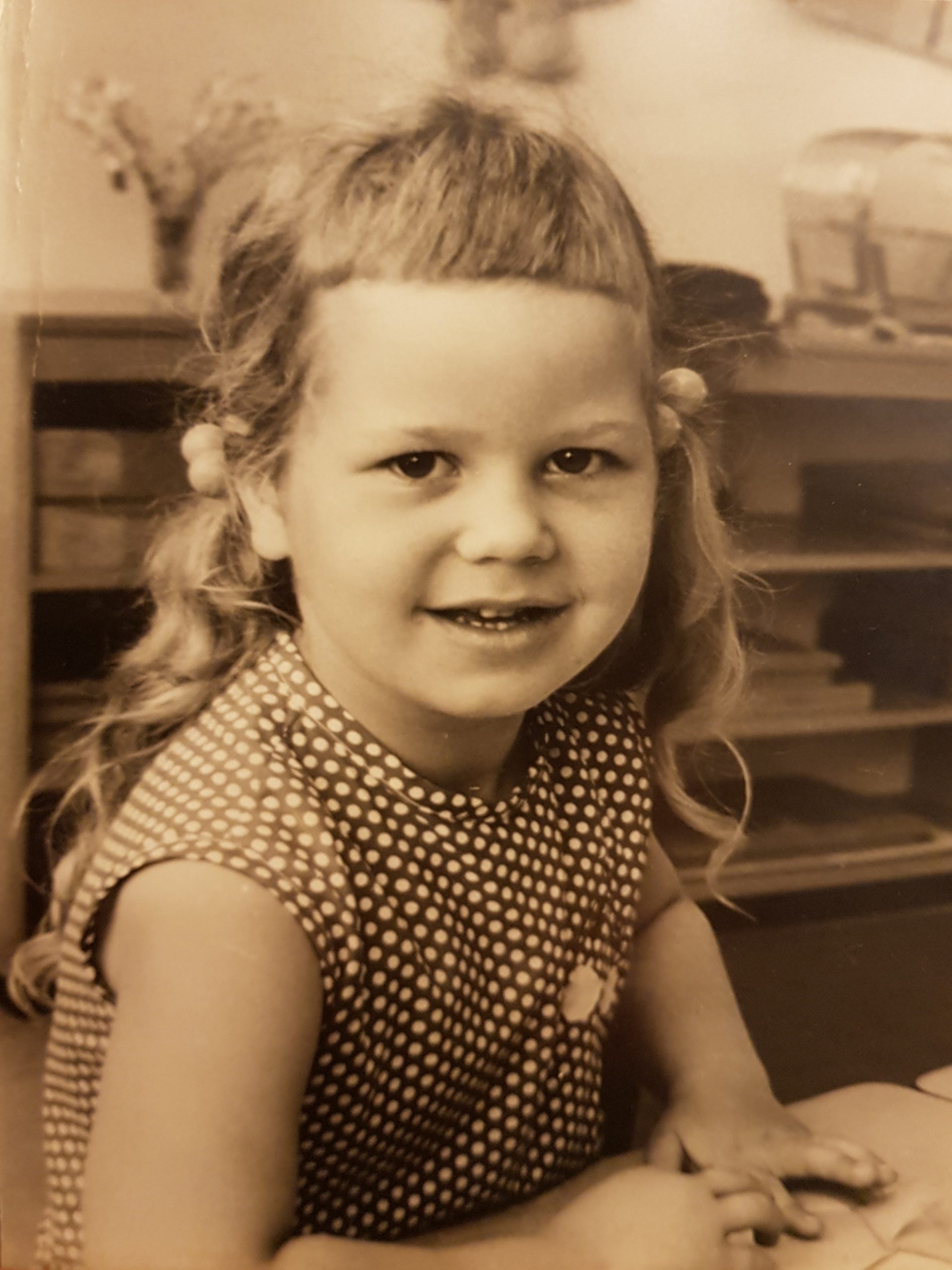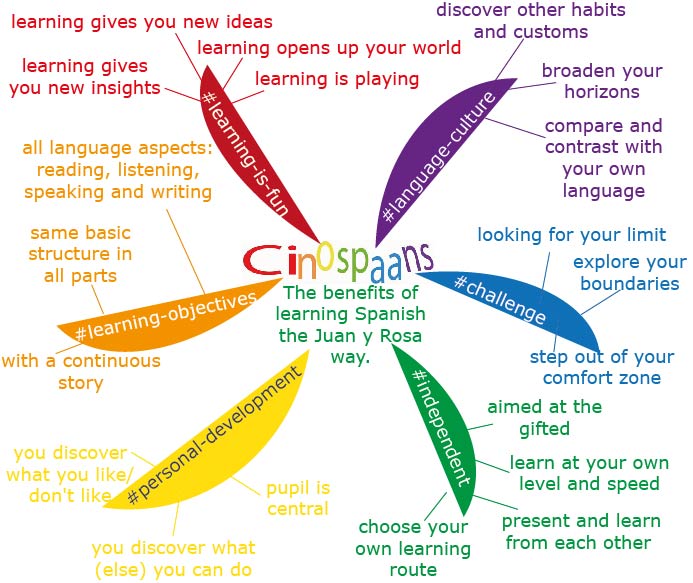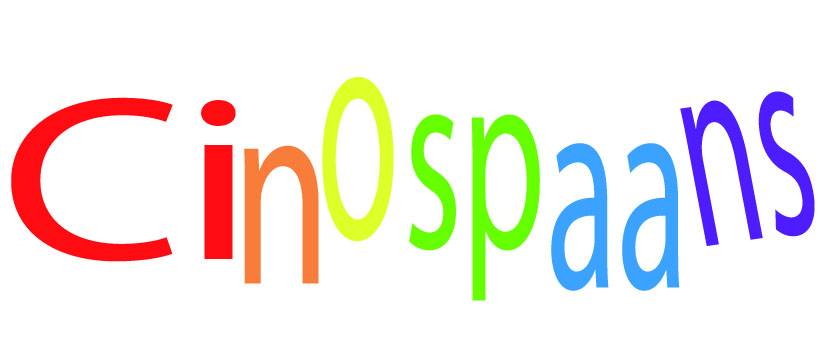Identity, connection and vision
Identity
Since 1 January 2018, Cinospaans has been the publisher of the Juan y Rosa books. The author and designer, Antoinette Gerichhausen, developed the books because she loves learning so much that she cannot believe that anyone could call learning ‘boring’. Yet she heard that criticism of learning during her own childhood, and she sometimes still hears it around her today. Because she grew up in line with the motto ‘If you don’t enjoy doing something, you can make it fun yourself,’ she has a natural talent for emphasising the positive aspects of learning.
She sees learning as a great opportunity to acquire new knowledge, as a personal challenge, as the beginning of new development, as an extra layer on top of the knowledge that you already have, and as a way to add depth to yourself. That’s why she has developed a Spanish learning method that is so surprising that it makes learning fun for all pupils. Moreover, in this method helps every child to develop their own successful approach to learning!

Connecting with the pupil
This is an appealing and challenging method for pupils to learn Spanish. The following elements make it surprising and fun:
- the gifted pupil has been given the lead role
- pupils learn something difficult and new together
- they learn about a new culture
- they learn about the sounds and structure of another language
- they learn about ‘learning’
- they can learn at their own pace
- they discover that long-term learning requires a great deal of effort
- the book is very colourful
- the stories contain emotion
- a playful approach to learning Spanish: based on puzzles, plays, songs, a domino game
- they explore new learning strategies and discover the best strategy for them
- they can make their own choices while learning
The learning method has been designed with full consideration of those pupils who lack the challenge of ‘learning’ in primary school. Such pupils find the method appealing and fun to work with, and are stimulated to continue to work with it independently.
The learning method appeals to pupils of every level of ability thanks to the possibilities for differentiation. Ultimately, you can learn from every pupil, whether they are gifted or not; think of multilingual children, language-sensitive children, but also dyslexic* children. Moreover, learning together with your best friend can be a very big incentive and hence of great value.
The primary role of the teacher is to facilitate pupils in their learning, provide a safe environment and encourage them to achieve things that the pupils themselves did not think possible.
*Did you know that a dyslexic child may actually discover that they can read Spanish without a problem? Spanish has five consistent vowel sounds and a simple, transparent combination of letters and sounds.

Vision
When the first part was released in 2005 (by IVIO World School) and the second part in 2007, schools did not see the need to learn Spanish at a young age. About 800 Dutch primary schools started with Juan y Rosa in group 7/8 (second half of Key Stage 2). This has shifted in recent years; pupils who need an extra challenge are now starting with Part 1 in group 5/6 (first half of Key Stage 2). In 2015, Part 0 was released for pupils in group 3/4 (Key Stage 1). Educators have realised that pupils can be strongly challenged at a younger age.
But what if schools took the bold step of offering every pupil from the age of five the opportunity to learn Spanish with Juan y Rosa, a learning method that takes the diversity of the pupils into account? Pupils can work independently on learning Spanish and collaborate on joint assignments. They can learn Spanish at their own pace and level. In addition to English, they receive an additional Romance language and they gain more insight into all kinds of language aspects in a natural and playful way.
That is my wish: for every pupil to experience how much fun learning can be! Language learning enriches a pupil’s development. More languages mean more comparison options when learning other languages, and comparing them enhances the insights into each language individually: differences in grammar, word order, pronunciation, use of words, phonetics, cultural influences. So let’s do it! Let’s offer every pupil the opportunity to learn Spanish!
